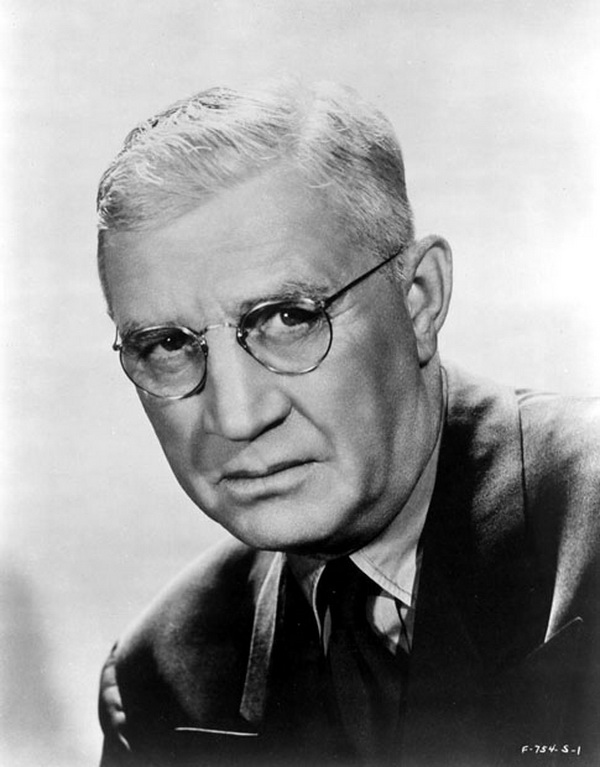
Lloyd Bacon
Birthday:
4 December 1889, San Jose, California, USA
Birth Name:
Lloyd Francis Bacon
Height:
178 cm
One of the workhorses in Warner Brothers' stable of directors in the 1930s, Lloyd Bacon didn't have a career as loaded with classic films as many of his more famous contemporaries. What few "classics" he had his hand in (42nd Street (1933), Footlight Parade (1933)) are so overshadowed by the dazzling surrealistic choreography of...
Show more »
One of the workhorses in Warner Brothers' stable of directors in the 1930s, Lloyd Bacon didn't have a career as loaded with classic films as many of his more famous contemporaries. What few "classics" he had his hand in (42nd Street (1933), Footlight Parade (1933)) are so overshadowed by the dazzling surrealistic choreography of Busby Berkeley that casual film buffs today often forget they were actually directed by Bacon. While his resume lacks the drama of failed productions and tales of an unbridled ego, he consistently enriched the studio's coffers, directing a handful of its biggest hits of the late 1920s and 1930s. Bacon's career amounts to that of a competent--and at times brilliant--director who did the best with the material handed to him in assembly-line fashion.Lloyd Bacon was born in San Jose, California, on January 16, 1890, into a theatrical family (his father was Frank Bacon, a playwright and stage actor). His parents enlisted all the Bacon children onto the stage. Despite having a strong interest in law as a student at Santa Clara College, Lloyd opted for an acting career after appearing in a student production of "The Passion Play." In 1911 he joined David Belasco's Los Angeles Stock Company (with Lewis Stone), touring the country and gaining good notices in a Broadway run of the hit "Cinderella Man", and gaining further experience during a season of vaudeville. He switched gears in 1915 and took a stab at silent Hollywood, playing the heavy in several of Gilbert M. 'Broncho Billy' Anderson's shorts and pulling double duty as a stunt man. With America's entry into World War I in 1917, Bacon enlisted in the Navy and was assigned to the Photo Department. This began a lifelong admiration for the service and might explain the Navy being a favorite recurring theme in many of his films.After the war's end Bacon moved from Mutual (Charles Chaplin's studio at the time) to Triangle as a comedy actor. It was at this point that he got his first taste of directing-- he had let everyone at the studio know he had an interest in helming a picture, and when the director of a now forgotten Lloyd Hamilton comedy short fell ill, Bacon was given his chance. Constantly moving, he joined tightwad producer Mack Sennett as a gag writer. Sennett, sensing a bargain, happily accommodated Lloyd's desire to become a full-time director by early 1921. The Sennett studio was already in an irreversible decline during Bacon's tenure there but it allowed the novice director to gain a wealth of experience. He apprenticed for Sennett until joining Warner Brothers in 1925, an association that would last a remarkable 18 years and begin when the working-man's studio was building a strong stable of contract directors that included Michael Curtiz, Alan Crosland, John G. Adolfi and Mervyn LeRoy.Although Lloyd never became known for a particular style other than a well-placed close up, his ability to bring in an entertaining film on time and within budget earned him such enormous respect from the five Warner Brothers that he was soon handed control over important projects, including The Singing Fool (1928), Al Jolson's follow-up to The Jazz Singer (1927), which grossed an unheard-of (for Warners, at least) $4,000,000 in domestic receipts alone-- the studio's #1 hit for 1928. Bacon was rewarded by becoming the highest paid director on the studio lot, earning over $200,000 a year throughout the Depression. He was called upon to direct the studio's big-budget production of Moby Dick (1930), which garnered good notices, but it's a version that's barely remembered today.The 1930s saw Bacon assigned to the assembly line; aside from the Busby Berkeley-choreographed films, he directed many of James Cagney's crowd-pleasing two-week wonders, including Picture Snatcher (1933) (Cagney once remarked that the schedule on that picture was so tight that, one time after he and the cast had rehearsed a particular scene, Cagney said, "OK, Lloyd, are you ready to shoot?" Bacon grinned and said, "I just did!") and The Irish in Us (1935). As a reward, he was occasionally afforded more time and money on productions such as Here Comes the Navy (1934) and Devil Dogs of the Air (1935). He also directed Cagney's return effort after his ill-advised move to cheapjack Grand National Pictures after one of his periodic salary disputes with studio head Jack L. Warner-- the badly miscast if frenetic Boy Meets Girl (1938). This was one of Cagney's least critically acclaimed Warner Brothers films of the 1930s, but a smash hit for the studio.During his years at Warners, Bacon gained a reputation as a clothes horse, the dapper director arriving on the set dressed to the nines, wearing expensive hats that he would hurl around the set when expressing his dissatisfaction (he ruined a lot of hats) at an actor's performance or missed cue. Bacon continued to turn out profitable films for the studio until moving to 20th Century-Fox in 1944 (a logical move, since the recently discharged Darryl F. Zanuck knew Bacon from his early days at Warners). He stayed at Fox until 1949, then bounced among Columbia, Fox, Universal and finally the chaotically-run RKO in 1954.He worked virtually until his death from a cerebral hemorrhage at age 65. Show less «







